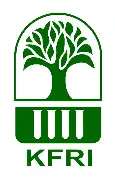Ripping and planing characteristics of some exotic bamboo species grown in Ghana
DOI:
https://doi.org/10.55899/Keywords:
Cutting angle, feed speed, planing, ripping, surface qualityAbstract
In this study, the machining characteristics of eight exotic bamboo species extracted from Daboase, Kusi near Kade and Amantia in southern Ghana were assessed. The bamboo species include Dendrocalamus latiflorus, Bambusa bambos, Guadua angustifolia, Guadua chacoensis, Dendrocalamus brandisii, Bambusa vulgaris var. vittata, Bambusa vulgaris (from plantation) and Bambusa vulgaris (from natural forest). These were cross-cut into the butt and top portions. All the samples for the six planing operations were planed at 20 and 30 cutting angles and at 6, 9 and14 m/min feed speeds. These were evaluated and graded in accordance with ASTM D 1666-87. The results indicate that the ease of ripping was better with the top samples than the butt and ripped surfaces were generally smooth. Ripping of Bambusa vulgaris from the natural was relatively difficult than the other samples. The surface planing quality was better with the butt samples from the three localities than the top portion. Bambusa vulgaris from the natural forest recorded the highest percentage surface quality for each planing condition There were no statistically significant differences between 20 and 30 cutting angles (P≥0.05) Data on ripping and planing of the selected bamboo species that have been generated can form the basis for more comprehensive research on the machining properties of bamboo species in Ghana.
References
American Society for Testing and Materials 2007. Standard test methods for small clear specimens of timber, ASTM D 143-94. In: Annual Book of ASTM Standards, 2008. Section 4, Construction Vol. 04.10. West Philadelphia, PA, USA. pp. 20-52.
American Society for Testing and Materials 2004. Standard test methods for conducting machining tests of wood and wood-base materials, ASTM D 166687. In: Annual Book of ASTM Standards 2008. Section 4, Construction Vol. 04.10. West Philadelphia, PA, USA. pp. 201-219.
Belcher, B. 1996. The role of bamboo in development. In Bamboo, people and environment: Proceedings of the 4 International Bamboo congress held in Bali, Indonesia, June 1995, vol 4: 1-9. New Delhi: The International Network
for Bamboo and Rattan (INBAR).
Downloads
Published
Issue
Section
License
Copyright (c) 2025 Journal of Bamboo and Rattan

This work is licensed under a Creative Commons Attribution-NonCommercial-ShareAlike 4.0 International License.
How to Cite
Most read articles by the same author(s)
- F.W. Owusu, E. Appiah-Kubi, S.L. Tekpetey, C. Essien, P. I. Arthur, G. K. Zorwe, Products development of laminated panel doors from plantation grown bamboo species in Ghana , Journal of Bamboo and Rattan: Vol. 13 (2014): Issue 3 & 4
- E. Appiah-Kubi, F.W. Owusu, S. L. Tekpetey, C. Essien, H. Seidu , Investigating the mechanical properties of some bamboo species for efficient utilization in Ghana , Journal of Bamboo and Rattan: Vol. 13 (2014): Issue 3 & 4
- T. Peprah, C. Essien, K. Owusu-Afriyie, E. G. Foli, J. Govina , A. A. Oteng-Amoako, Exploring the use of bamboo for accelerated reclamation of degraded mined sites in Ghana , Journal of Bamboo and Rattan: Vol. 13 (2014): Issue 3 & 4
- E. Appiah-Kubi, F. W. Owusu, S. L. Tekpetey , C. Essien, Bamboo for housing in Ghana: challenges and prospects for the future , Journal of Bamboo and Rattan: Vol. 13 (2014): Issue 3 & 4
Similar Articles
- F.W. Owusu, E. Appiah-Kubi, S.L. Tekpetey, C. Essien, P. I. Arthur, G. K. Zorwe, Products development of laminated panel doors from plantation grown bamboo species in Ghana , Journal of Bamboo and Rattan: Vol. 13 (2014): Issue 3 & 4
- Belete Getnet, Smegnew Melese, Response of GA3, NAA, and KNO3 treatments on in vitro seedgermination and shoot performance of highland bamboo(Oldeania alpina L.) , Journal of Bamboo and Rattan: Vol. 22 (2023): Issue 3
- Koranat Narkpiban, Piangkhwan Kruapoo, Rangsan Koodsamrong, Chaiyasit Keawcharoon, Najjapak Sooksawat, Characterization and property evaluation of low-cost electrically conductive bamboo charcoal from Dendrocalamus sericeus Munro. , Journal of Bamboo and Rattan: Vol. 22 (2023): Issue 1
- Alok Yadav, Sanchili Verma, Rahul Nishad, Kuldeep Chauhan, Bambusa vulgaris blooms along the Eastern plains of Uttar Pradesh , Journal of Bamboo and Rattan: Vol. 22 (2023): Issue 3
- K. Sijimol, Suma Arun Dev, E. M. Muralidharan, V. B. Sreekumar, DNA barcoding: An emerging tool for precise identification and certification of planting stock in taxonomically challenging bamboo species , Journal of Bamboo and Rattan: Vol. 13 (2014): Issue 1 & 2
You may also start an advanced similarity search for this article.

